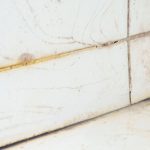What a strange show this is. It’s a throwback to post-punk, post-New Romantic London; the Tory years of boom and bust;the era of Aids crisis, the years of “yoof” culture on TV and of the underground coming up for air; years of art going hip and mainstream; of innocence and rage and provocation.
Leigh Bowery may seem to have emerged from some hidden reach of London’s subculture, but he was twice interviewed for the BBC’s Clothes Show, and sped around his environs, and club Taboo, for London Weekend Television, in the company of Hugh Laurie. It is a pity this last hilarious and at times revealing film is not in Tate Modern’s Leigh Bowery retrospective. Just about everything else Bowery did, as well as everyone he met, danced and drank with, everyone he hung out with, insulted and argued with, is.
Club queen Princess Julia, the late singer Poly Styrene, Peter Doig and the Neo Naturists, Al “Lanah” Pillay, Lucian Freud and Mark E Smith, as well as the closer world of Bowery’s friends and entourage, are all here. Here comes everybody, in a popper-fuelled, coke-addled, smoke-wreathed show, filled with the noise of hi-NRG disco beats, bagpipes, the music of the Fall and sampled drones from the Velvet Underground, undercut by snatches of bitchy repartee and laughter.
And here come mannequins striding in Bowery’s extreme get-ups, and Bowery’s clothes fastidiously remade for the Tate (the originals got trashed, and soiled by what’s called “disco dirt”), a pair of boots jammed into clogs, neck-corsets designed by Mr Pearl, the annotated guest lists to Taboo, catwalk photos and tawdry red-top headlines, pop videos and excerpts from collaborations with dancer and choreographer Michael Clark, holiday snaps and postcards detailing Bowery’s sexual exploits, a one-piece outfit with the words A CUNT emblazoned where the head might be, and just about everything else you might, or might not, want to linger over. Phew.
Born in 1961, Bowery escaped the town of Sunshine, a Melbourne suburb, and moved to London in 1980, where he lived until his death from an Aids-related illness in 1994. We plot the trajectory in sometimes excessive detail. Bowery’s Australian Music Examination Board piano certificate, his Transport for London Photocard and a pair of voluminous silver lamé hot pants are lain out in a vitrine. They sit beside pages from his diary and evidence of Bowery having fun in a photobooth: Leigh looking psycho, Leigh looking rough, Leigh bewigged and with his hair bleached, Leigh kiss-curled and Leigh with his head shaved. Looking at these, I thought of surrealist photographer Claude Cahun, with her own gender plays and switches of looks and attitudes for the camera, as well, of course, of Cindy Sherman’s photobooth self-portraits, but Bowery was probably just having fun, not pitching himself against anyone.
Tate’s publicity material calls Bowery “one of the most fearless and original artists of the 20th century”. This is beyond hyperbole and misses the point of Bowery’s excess and his purpose. Playing with his image, his clothing and his body, Bowery’s career – if you could call it that – was mostly about self-invention and re-invention, and seeing how far he could go. This mostly meant going from club to club, from Kensington Market, where for a while he had a stall, to Brick Lane (he lived nearby), where he bought Indian sari material, jewellery and other accessories, and to parks and public lavatories where he cruised for sex. Wherever Bowery went, he went too far. Perhaps this is why this exhibition is at Tate Modern, rather than at the V&A, where it feels it more rightly belongs.
Bowery posed in blackface (as well as greenface and blueface, spot-faced and pierced face), and once used a racial slur to name a fashion collection. This was but one of the several crass provocations he made in his public life – not that he appeared to make any distinctions between public and private. Naivety is no defence here. Performing at an Aids benefit in 1990, Bowery filled his colon with a large water enema before appearing on stage, intending to lie on the floor and create a human fountain. His costume prevented him from assuming the right position, so he squatted on his hands and feet and sprayed the audience from the front of the stage. In his diary Bowery writes “performance had problems which I turned to my advantage. Shat on the audience. Stole the show …” Bowery’s primary tactic was to be a succès de scandale, and, in the light of this retrospective, to upstage everyone.
As well as wanting to paint him as an animal, Freud came to admire Bowery’s mind. This is one thing we don’t see much of in this overstretched exhibition. What we see instead is an endless desire to be seen. All the clothes Bowery designed were primarily with himself in mind.
He turned heads at high-tea in Harrods for the The Clothes Show, and posed and preened behind a two-way mirror at London’s Anthony d’Offay Gallery, over two weeks in 1988, gathering crowds every day. He liked an audience and he liked the camera and the sense of confrontation, though all he could see in the reflective glass was himself, striking poses, assuming attitudes. My strongest memory of watching Bowery there was his stillness. Behind the glass, he made the rest of the room a vacuum. Somehow, he emptied us out.
Bowery was inescapably a creature of his time and his milieu. Seeing him on the street in Soho, bustling along with matronly purpose, his clothing and face covered in big red spots, he made the day feel brighter, things more real.
Although Bowery’s fashion designs have been influential, they seem an adjunct to his own plays with his body and his self-image. Diva and dandy, a social irritant and an alarming being-about-town, he became an unlikely model for Freud. Stripping naked, unasked, for their first session, Bowery became an ocean of flesh in Freud’s paintings, barely contained. In later photographs by Fergus Greer, Bowery seems to morph and shape-change from image to image, and in his costumes he slips between beauty and monstrousness, the outrageous and the vulnerable as we watch. He made of himself many things at once. This is inspiring and affirming and frightening and awful and somehow wonderful and dreadful to witness. You can’t take your eyes off him.












